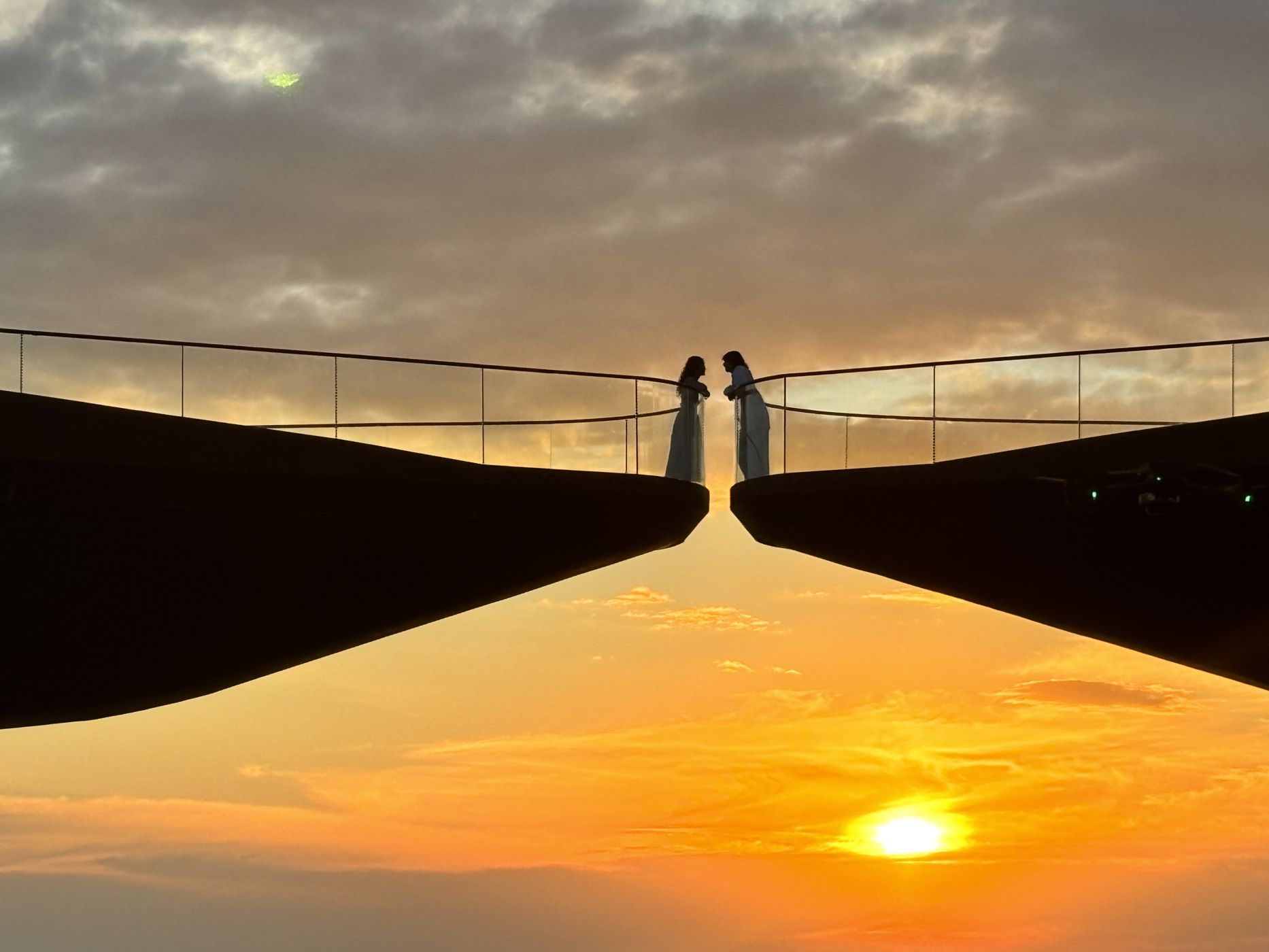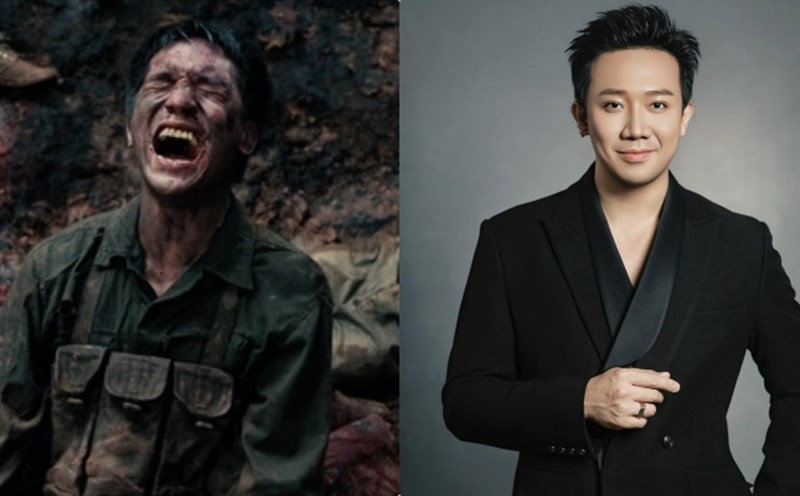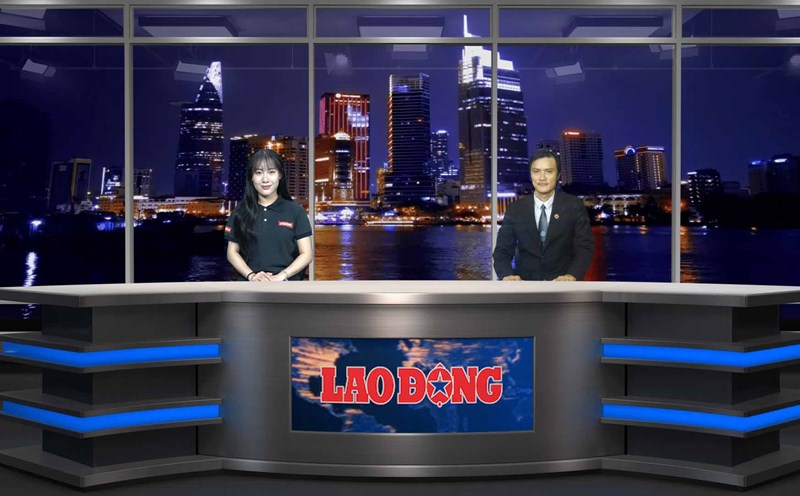In a conversation with Lao Dong Newspaper, Indian film producer Rahul Bali shared about his journey to bring Bollywood cinema to Vietnam, and told the story of the beauty and culture of Vietnam on the big screen.

The journey to bring Bollywood to Vietnam
Hello Mr. Rahul Bali, what brought you to Vietnam? Why did you choose Vietnam as the filming location?
- I feel very lucky to have laid the foundation for the wonderful journey of cinematic cooperation between Vietnam and India.
I have been in Vietnam since 2022 within the framework of the Vietnam Namaste Festival and was immediately conquered by the wonderful beauty of beaches, cities... When making the film "Love in Vietnam", we chose Da Nang, Da Lat and Phu Quoc - destinations with romantic beauty, inspiring love stories on screen.
After finishing, I felt that one film was not enough and continued to make a second film: SILAA. When it comes to a majestic cave setting, nowhere can be compared to Son Doong - the world's largest cave system, with its own ecosystem, big enough to accommodate the entire 40-storey skyscraper in New York, USA.
When discussing with director Omung Kumar, who has won many international awards, we immediately agreed that this was a unique project starting place. This is also a location that has never appeared in an international film, and we cannot miss it.
In addition to Son Doong Cave, we also implement the SILAA project in Ninh Binh, Ha Long, Cao Bang...
During the filming process in Vietnam, how did the crew receive support from the local government and partners?
- I have to say that the support is great. From asking for permission, working with management agencies, to being accompanied by local producers - all are enthusiastic and open. Our crew always feels welcomed and extremely supported.
From the start of Vietnam - India film cooperation through these blockbusters, will there be more Bollywood film crews coming to Vietnam?
- 100%. Love in Vietnam laid the foundation, SILAA is the next step, opening up new cooperation opportunities between the film industry and tourism. The 4th Namaste Vietnam Festival will soon take place. The event is expected to welcome two large groups from India: Film producers surveyed the setting and major travel companies learned about tourism products. I believe there will be more Indian filmmakers and tourists coming to Vietnam.
However, it should be noted that some countries are offering very strong incentive policies, from film subsidies to tax refunds at 40 - 50%. This is something Vietnam should consider. Because although beautiful scenery and great people are great advantages, for a filmmaker, economic factors are still important.
If Vietnam has an incentive policy, I believe the number of international film crews coming here will skyrocket. And when films come, tourism will grow hundreds of times more than the initial support cost.

Cinema opens the way, tourism flourishes
For the Indian market, how do you evaluate the power of cinema in promoting tourism?
- Cinema is the most powerful tool to promote tourism. When the audience watches a film, they not only follow the story but also immerse themselves in the setting. Unknown places on the big screen will arouse curiosity and desire to explore.
Bollywood is a billion-dollar industry that produces 2,000 films a year, more than Hollywood. Cinema connects the whole country of India, and as the 300 million middle class has increasingly access to travel, they choose destinations through film.
Even if Vietnam only attracts 1% of potential visitors, this number is still up to 3 million people, a golden opportunity not to be missed.
With Love in Vietnam and SILAA, we not only tell a story on screen but also want to bring the beauty of Vietnam to millions of Indian audiences, opening up new travel opportunities.
From the perspective of a producer, director and cultural activist, what makes Vietnam a promising destination for Indian tourists?
- Vietnam has everything that Indian tourists are looking for. First of all, visas can be issued by Vietnam within just 3 days.
Second, the current direct flight route is very convenient.
Third is cuisine. In big cities, there are many Indian restaurants, and there are also enough international culinary restaurants and especially Vietnamese specialties for visitors to enjoy.
The fourth point is safety. Vietnam is a very peaceful country, without war, without crime, completely different from many unstable areas.
The fifth is the world-class hotel and resort system, excellent service, and friendly people.
Sixth, Vietnam is a new destination, many Indian tourists have been to Europe and they want to find a different place.
However, the number of Indian visitors to Vietnam is still modest. What should Vietnam do to become a leading destination for Indian tourists, rather than just an option in Southeast Asia?
- Vietnam's potential is really huge. I think Vietnam can completely become the number 1 destination for Indian tourists, not just the top 5 or top 3. Let's look at statistics from the tourism industry of many countries: In 2024, there will be millions of Indian visitors to Southeast Asian countries such as Thailand (more than 2.1 million), Malaysia (more than 1 million), Singapore (1.2 million)..., but only about 501,000 visitors to Vietnam, the potential is still very large.
There is only one thing to do: To send a message to Indian tourists that Vietnam has all the things they are looking for in a hospitable country with popular English.
Vietnam needs to proactively promote tourism more strongly, through organizing roadshows, fairs and film events. At the same time, independent tourism promotion programs such as "Hello India" should also be implemented, corresponding to the Namaste Vietnam festival.
The 4th Namaste Vietnam Festival is expected to take place from October 4 to 12, 2025 in many localities with a series of cultural exchange and tourism promotion activities.
Rahul Bali was born and raised in India and is currently a film producer and CEO of Innovations India. He is known for his role in connecting culture and cinema between India and many countries, including Vietnam.
After successfully organizing major cultural exchange events such as the Namaste Vietnam Festival as general director, Rahul Bali continues to affirm his mark in the film industry with the film Love in Vietnam - the first film project to cooperate between India and Vietnam.
He is currently working with director Uman Kumar, an award-winning filmmaker in India, to produce the film SILAA, the first Bollywood project shot at Son Doong Cave and many other famous landmarks in Vietnam.
With the philosophy of always being a pioneer in making "first things", Rahul Bali not only connects culture and cinema between Vietnam and India but also opens up opportunities for cooperation in tourism and trade.










